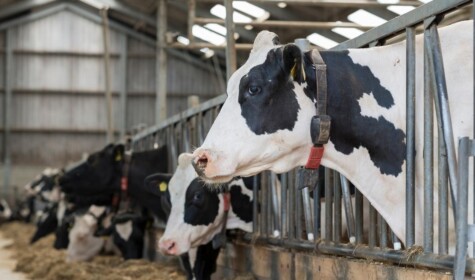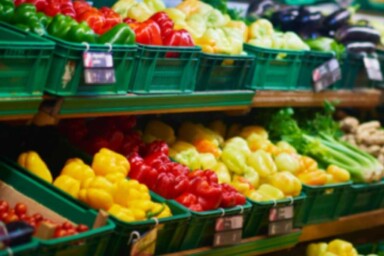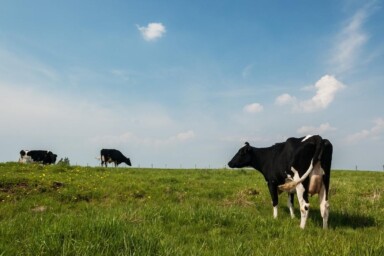Due to the increased power of supermarket retailers and the rise of just-in-time supply chains, farmers are on increasingly tight margins. Many struggle to remain profitable and will be further stretched by the reduction in basic payments over the next few years. This offers a huge motivation for food fraud, where farmers either stretch their yield by tweaking their product or pass off one product for another.
Such is the motivation for fraud in the dairy industry. The push for lower and lower prices has prompted increasing food fraud within UK dairy. The most common methods of fraud are dilution, fraudulent heat treatment and extension of shelf-life. Whole milk is diluted with water, yet still labelled as ‘whole milk’, stretching the yield further. Similarly, fraudulently heat-treated milk is mixed with fresh milk and sold as ‘fresh milk’, or sometimes microbial growth inhibitors are added to milk to extend shelf life or reduce refrigeration costs. A similar situation occurs with orange and apple juice, two common targets for food fraud, which are often adulterated by dilution with water, the addition of sugars, pulp wash (a lower quality product which is obtained by washing pulp with water after a first pressing of juice) or other additives.
However, market dynamics are not the only motivator for food fraud. Food fraud also occurs when the demand for food outstrips what natural systems can produce. As diets around the world have homogenised and populations have grown, there has been an increased demand for particular products, deemed to be ‘Western’ and hence desirable. Increased consumption of red meat is one example. However, the increased demand for these Westernised products has resulted in significant land use change, with more land converted over to agriculture to keep up with demand. This has led to catastrophic declines in biodiversity as native land is encroached upon.
Foods at risk
One product that is susceptible to food fraud, due to pressures on the natural world, is honey. With a global decline in pollinator numbers, attributed by many to the increase in pesticide use along with colony collapse, honeybee numbers have plummeted. With demand still rising, honey is frequently an adulterated product, with allegations of honey being diluted with syrup. In 2015, the European Commission’s Joint Research Centre tested honey samples and found that 14% were suspected of ‘containing added sugar syrups’. This percentage of fraudulent honey is likely to increase as the dual crises of climate change and biodiversity loss continue, causing honeybee numbers to drop further. As the world’s biggest producer of honey, fraudulent honey from China is a significant issue, exacerbated by the weakness of Chinese food regulations. Once Chinese honey (adulterated or not) enters the global supply chain, it is difficult to trace, due in part, to a lack of country-of-origin labelling requirements.
Similar is the pressure faced by fisherfolk to land specific species of fish in ever increasing numbers, despite the fact that fish stocks are declining. A Guardian Seascape analysis in 2021 revealed that about 40% of seafood samples from restaurants, fishmongers and supermarkets across the world were mislabelled, including retailers in the UK. Snapper is frequently mis-sold as consumers continue to demand it in greater amounts, despite the limited wild population. This is amplified by the rise of pescatarian diets.
However, the instances of fraudulent snapper demonstrate another dynamic that is causing food fraud to increase. Consumers are increasingly demanding specific species because those products have been marketed to them. Dietary diversity has declined, and people increasingly demand the same foods over and over again. Notably, 66% of total global crop production is from nine different plant species. This means that certain products are more desirable than others – even if the difference is imperceptible to the consumer – and can demand a price premium. People want pink lady apples, even though there are hundreds of different types of apples that are equally as delicious. Similarly, people choose datterini tomatoes, butternut squash and haas avocados over the other varieties, leading to greater production of those crops.
This desire for a brand of food is the motivation behind much food fraud. Olive oil is often diluted with other oils, and in the seafood sector, lower value fish species are often substituted for higher value species of the same family. For example, a recent investigation in Germany found that 48% of tested samples labelled as ‘king scallops’ were actually lower value Japanese scallops. Similarly, the increased demand for sourdough bread, partly though trends on social media as well as real and perceived health benefits, has led to fraud. In 2018, Which? Magazine found that across 19 loaves in UK supermarkets, one in five were not made according to the proper sourdough method (using a starter) and contained extra ingredients or additives, such as vinegar, ascorbic acid and yoghurt to provide the ‘sour’ flavour.
So, what can consumers do about it?
One important driver of food fraud is our over-reliance on particular fish or fruit or other varietals. Consumers need to diversify their diets and be willing to try new things. Relying on one or two varieties makes the species susceptible to pests and disease, as diversity builds resilience into the system. When it comes to fish, for example, many of us in the UK are too reliant on the ‘BIG 5’: cod, haddock, tuna, salmon and warm water prawns. One of the easiest ways to choose more sustainable seafood is to try alternative species that have been caught sustainably and in-season. Why not have dab instead of plaice? Or coley instead of cod?
However, the reality is that our globalised food supply chain is now so long that it is almost impossible for consumers to truly know where their food comes from. While certification schemes (such as organic) aim to help address these issues and promise to do the due diligence on behalf of the consumer and assess what the impacts might be, they can only go so far due to the huge distances involved. What is needed is clear and consistent labelling of food so that citizens can make informed choices about what they are purchasing. This needs to be mandatory and across all products (including processed and imported food) to allow for genuine comparison.
However, the label is only as good as the data that underpins it. This approach to method-of-production labelling needs to use transparent farm-level data to relay to the consumer in an impartial manner the method by which the product has been produced. The Global Farm Metric provides a useful method of collecting and reporting this farm-level data that could, with time, be leveraged by the UK Government into a consumer-facing food label.
Until that happens, the onus rests with the time-stretched consumer to do their own due diligence of where and how their food has been produced – a responsibility that hardly seems fair.






